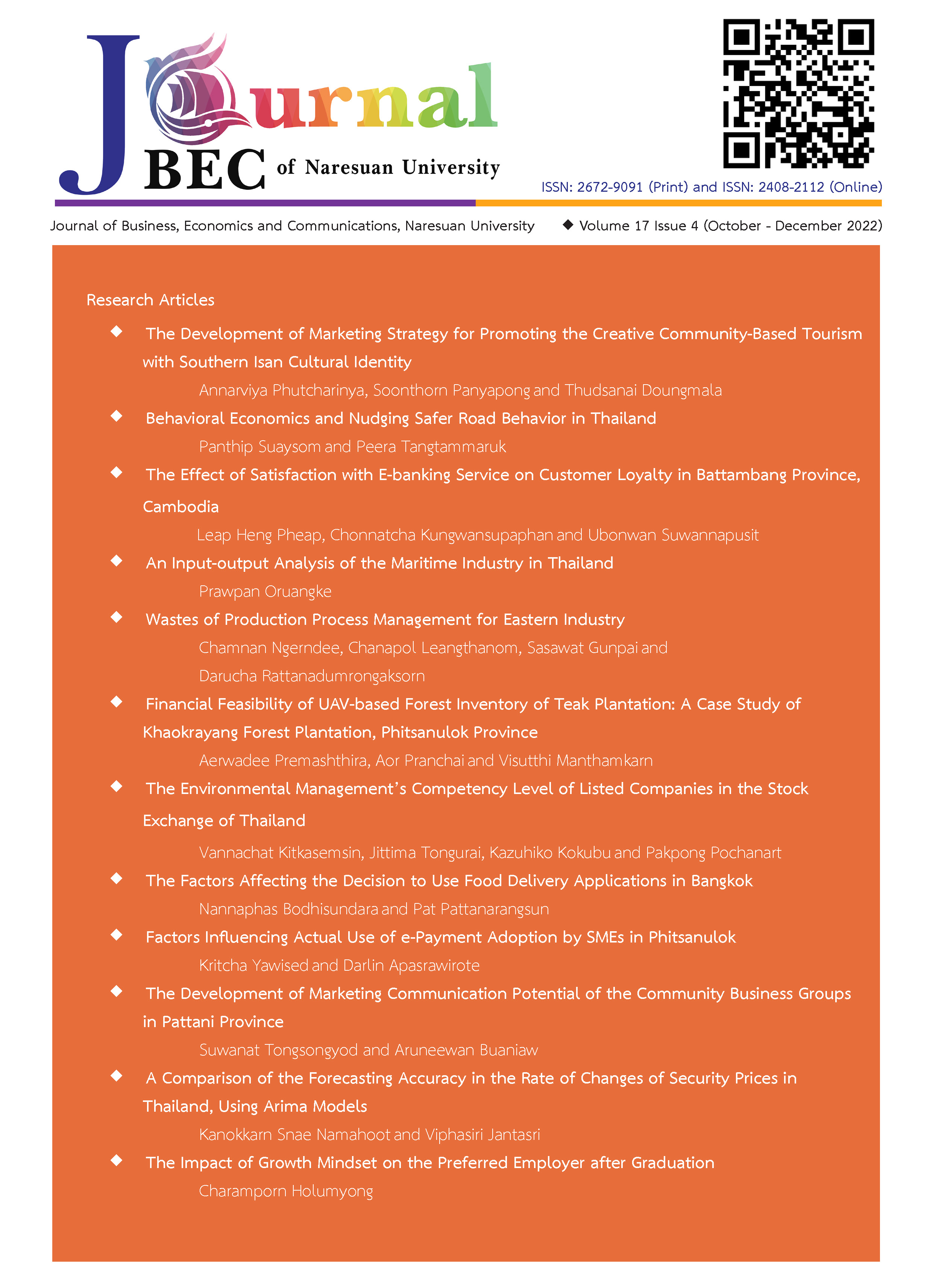The Development of Marketing Strategy for Promoting the Creative Community-Based Tourism with Southern Isan Cultural Identity
Main Article Content
บทคัดย่อ
The purpose of this research was to develop the marketing strategy for promoting the creative community-based tourism with the Southern Isan cultural identity. The communities with identity in 6 provinces in the Southern Isan group were selected as the areas of the study. This was qualitative research. In-depth interviews were employed for data collection. The interviews and focus group discussion were administered to create a participatory process. Data were analyzed by content analysis. When considering each aspect according to the marketing mix theory, the study results can be presented as follows. 1. Products: The products have the identity of each area. 2. Price: The price of tourism products and services is reasonable and good value for money. 3. Place or distribution: There are 2 distribution channels in the tourism service market: 1) distributing directly to customers and 2) distributing through intermediaries. For souvenirs, there are online marketing which is communicating directly to customers and offline marketing. 4. Promotion: The tourism is promoted mostly through the public relations brochures and price reduction campaigns. 5. Process: The communities have the process of welcoming tourists. 6. Physical evidence: The communities have tourist attractions with unique local identity. 7. People: In each community, there is a tourism enterprise group. The organizational structure consists of a chairman and members of various departments with clear duties. The development of the creative tourism marketing strategy is recommended in 2 areas, namely the tourism service market and the souvenir market in order to be successful in the sustainable community tourism business.
Article Details

อนุญาตภายใต้เงื่อนไข Creative Commons Attribution-NonCommercial-NoDerivatives 4.0 International License.
เอกสารอ้างอิง
Armstrong, G., Adam, S., Denize, S. and Kotler, P. (1994). Principles of marketing (6th ed.). New Jersey: Prentice-Hall.
Cameron R. and Fellow. (2012). Ajzen’s theory of planned behavior and social media use by college students. American Journal of
Psychological Research, 8(1), 1-20.
Kotler, P., Bowen, J. T. and Makens, J. (2003). Marketing for hospitality and tourism (6th ed.). Upper Saddle River: Prentice-Hall.
Miles J. G. (2014). Instagram power build your brand and reach more customer with the power of picture. New York: McGraw-Hill Education.
Minister of Tourism and Sports. (2019). Tourism situation in December 2019, Retrieved January 3, 2019, from https://www.mots.go.th/download/article/article_20200123132729.pdf
Misiura, S. (2006). Heritage marketing. Oxford, UK: Butterworth-Heinemann.
The Secretariat of The Cabinet. (2019). Statement of government policy of prime minister Prayuth han-ocha, prime minister Thursday, July 25, 2019. Retrieved December 20, 2019, from https://www.parliament.go.th/ewtadmin/
Wongmontha, S. (2004). Complete with regards to marketing communications. Bangkok: Dhammasarn.


